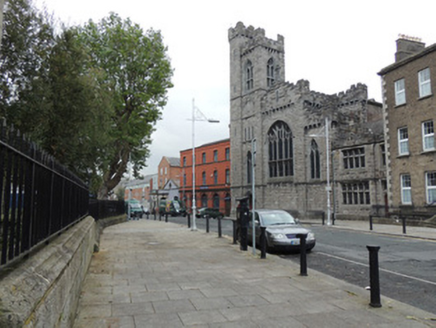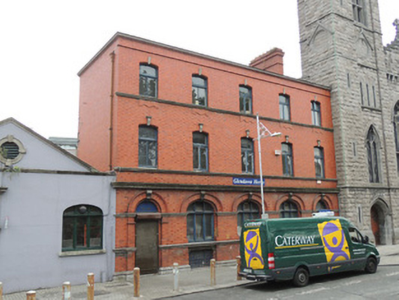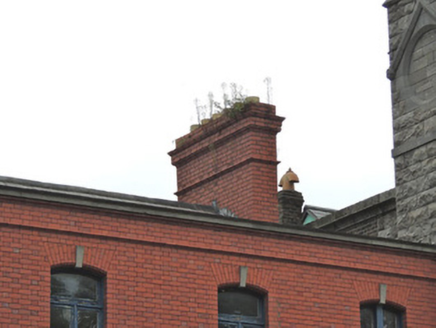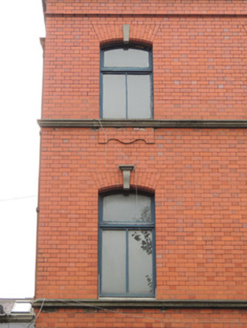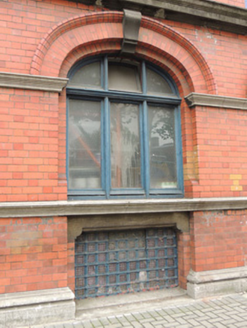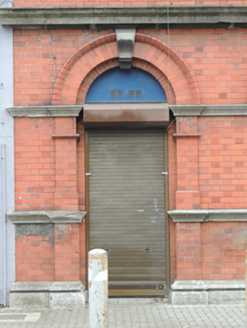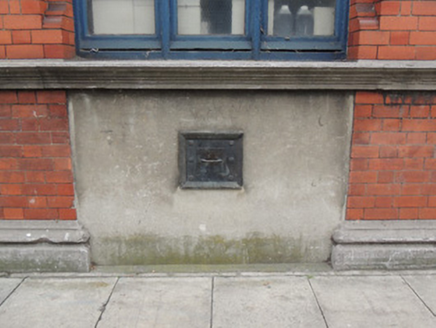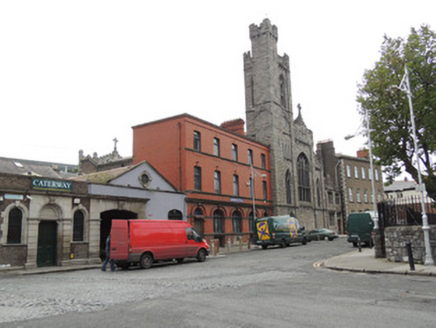Survey Data
Reg No
50070305
Rating
Regional
Categories of Special Interest
Architectural, Historical, Social
Original Use
Office
In Use As
Store/warehouse
Date
1905 - 1910
Coordinates
315149, 234592
Date Recorded
15/10/2012
Date Updated
--/--/--
Description
Attached five-bay three-storey former office, built 1908, with extensions to rear (west) elevation. Now in use as warehouse. Hipped slate roof with red brick chimneystack and cut granite cornice. Cast-iron rainwater goods. Machine-made red brick walls laid in Flemish bond to front (east) and south elevations, carved granite string course and plinth course. Camber-headed window openings to upper floors with brick voussoirs and granite keystone, continuous carved granite sills courses. Segmental-headed window openings to ground floor, having moulded red brick voussoirs, carved granite impost course and sill course. Timber casement windows throughout. Shouldered square-headed openings below ground floor windows, having cut stone lintels, glass bricks, cast-iron mullions, and cut limestone sill. Round-headed door openings to end bays, with moulded red brick surround with carved keystone. Concrete paving to east with granite kerbstones.
Appraisal
A well proportioned building designed by George Luke O'Connor as offices for Carton Bros., poultry, game, egg, butter and cheese agents. The area west of Capel Street thrived as a market district throughout the eighteenth, nineteenth and twentieth centuries, and the building is evidence of that continuing tradition. The use of crisp machine-made red brick combined with the continuing classical tradition is indicative of early-twentieth century construction. A lodgement hatch to the front elevation may have been used for commercial transactions. The cut stone is evidence of the skilled workmanship still available in the early twentieth century, and enhances the simple form of the building. It appears to have been in the same ownership as the earlier building on the corner to the south from the mid-nineteenth century, and an extension by Jones & Kelly built in 1949 joins the two.
